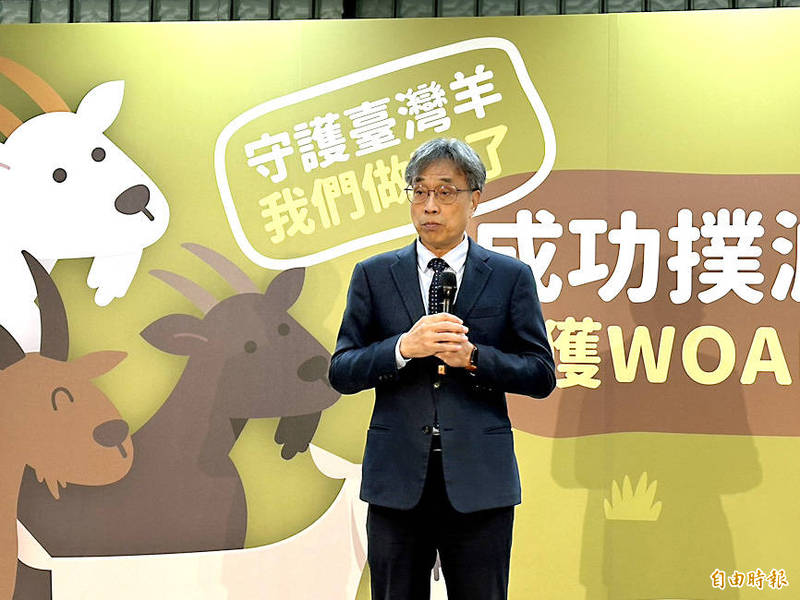《TAIPEI TIMES》Taiwan said to be goat pox free

Acting Minister of Agriculture Chen Junne-jih speaks at a news conference in Taipei on Thursday. Photo: Yang Yuan-ting, Taipei Times
WOAH DESIGNATION: The agriculture ministry said it would keep helping farmers, for example by bringing in milk storage tanks, as the industry has ‘huge potential’
Staff writer, with CNA
The World Organisation for Animal Health (WOAH) has classified Taiwan as free of goat pox, the Ministry of Agriculture said on Thursday, adding that the status would greatly benefit the nation’s goat farming industry.
The WOAH status was made public on Tuesday, about three months after Taiwan applied for the change to be made, the ministry said in a press release.
Acting Minister of Agriculture Chen Junne-jih (陳駿季) said he welcomed the news with “great excitement,” adding that it was the result of a decade of effort by Taiwan’s authorities and farmers to eliminate goat pox, which was first detected in the nation in 2008.
The ministry would continue to help goat farmers upgrade their farms and equipment, for example by bringing in cold-chain logistics management and milk storage tanks, given that the industry has “huge potential for growth,” Chen said.
The objective is for Taiwan to establish itself as a robust producer capable of supplying goat products domestically, which would lower dependence on imports and reduce the nation’s carbon footprint, he said.
Official data showed that there are 33,002 dairy goats at 190 farms nationwide, with production worth approximately NT$401 million (US$12.85 million) annually — entirely for domestic consumption.
There are 83,494 meat goats at 1,462 farms, representing business worth NT$911 million annually, the data showed.
WOAH lists goat pox as a deadly viral disease caused by capripoxvirus. Live and inactivated vaccines are used to control the disease.
A region is considered free of goat pox when the disease has not been detected for at least three consecutive years, with the period starting six months after the slaughter of the last affected animal, the WOAH Web site says.
Animal and Plant Health Inspection Agency deputy director-general Hsu Jung-pin (徐榮彬) said that the first goat pox case was confirmed in Taoyuan in 2008, prompting the culling of 210 of the animals.
There was an outbreak two years later, leading to about 23,740 goats being culled, about one-quarter of the total number in Taiwan at that time.
Many goats were getting sick every day and there was “no way to stop” the spread of the virus until the vaccine became available, Goat Farmers’ Association director-general Lin Chun-chin (林浚琛) said of the situation in 2010.
Even though goat farmers were reimbursed for the culls, many were upset at having to kill animals that they had in some cases reared for more than a decade, Lin said.
However, the situation greatly improved after vaccinations began two months after the outbreak, Hsu said, adding that Taiwan’s last detected goat pox case was in Changhua County in February 2012.
新聞來源:TAIPEI TIMES





















